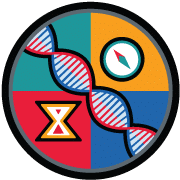Emily Hobhouse, British welfare campaigner, was a truly remarkable woman, lauded by the people she helped, she was often considered a traitor by various of
her fellow countrymen in Britain. Her story reveals the power of the individual when faced with the might of political and military leaders. As a woman, she represents the often hidden face of women who worked so resolutely and tirelessly behind the scenes, influencing opinion and outcome along the way. How did Emily Hobhouse become a welfare campaigner in South Africa?
- Emily was born in St Ives in Cornwall and like so many women then and now, she looked after her parents until they died.
- She was the sister of Leonard Hobhouse the social liberal and so was used to political debate and had a firmly formed opinion of her politics by her mid thirties.
- In 1895 she travelled to Minnesota to work amongst Cornish miners and their families who had migrated to America and fallen on hard times
- At home she was an active supporter of Adult Suffrage which supported the view of equal votes for all, men and women
- She became more politically active and was outspoken in her opposition to the Boer War. As a result she was invited to become secretary to the women’s branch of the South African Concilliation Committee
- Through this work, Emily learnt of the women’s and children’s prisoner of war camps in South Africa and how they were suffering in them as a direct result of British military action.
- She set up a fund to collect money on their behalf and took it herself to South Africa to organize it’s distribution. Lord Kitchener gave her permission to use two army trucks to take the provisions into the camps
- She was shocked at the appalling conditions she witnessed in the Bloemfontein camp, she wrote a report and presented it to the Government
- As a result of this they set up a formal commission and sent a team to investigate headed by Millicent Fawcett, the women’s rights campaigner. They agreed with Emily’s account of the brutal conditions in the camps and made more money available to improve them.
- Emily continued to work in South Africa setting up schools to teach weaving and spinning and was loved by the South African people.
- In Britain however she was reviled and called a traitor, the press turned on her and her life became very difficult for Emily
Emily Hobhouse involved herself in other welfare work during WWI for which again she was again called a traitor. In South Africa though, she is considered a heroine, follow the links to find out more about the work of Emily Hobhouse in South Africa
Useful resources and sources:
To find out other connections with Emily, look at our WWI posts in Major Events or connect her to other campaigners in People and Personalities. If you are interested in Cornish migrants go to our Migration theme.
For more useful resources omn women’s politics look at our Women’s rights theme
Intriguing Connections
- Emily worked as a welfare campaigner an dalthough she was a member of ther Adult Suffrage movement she distanced herself from women’s Suffrage. Consider how you might connect women in your family tree to the suffrage movement, are there any clues in photos or letters as to their sentiments?
Posted in TIMELINE, Leading Women, 19th Century 1800-1899, THEMES, Europe, LOCATION, Africa, Theme Major Events, UK, THEME Emigration and Immigration, England, THEME History of Organisations, World War I, Theme Intriguing People, Boer War, British Army, Heros and Heroines, South Africa, Womens Suffrage, THEME Wars, battles and campaigns

